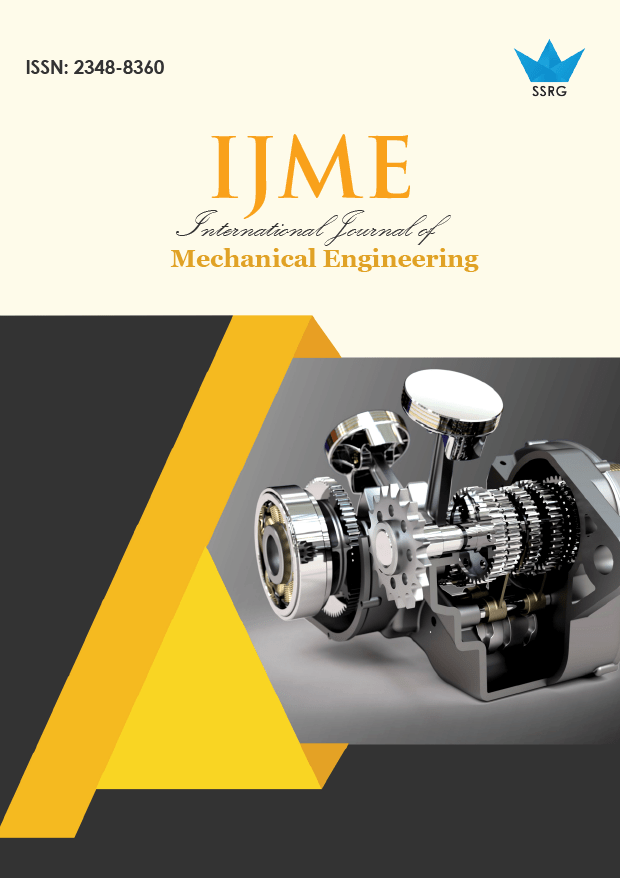Design of a Portable Freight Ropeway for Transporting Construction Materials on Hillside

| International Journal of Mechanical Engineering |
| © 2025 by SSRG - IJME Journal |
| Volume 12 Issue 1 |
| Year of Publication : 2025 |
| Authors : Albert Jorddy Valenzuela Inga, Rosali Ramos Rojas, Ronald Michael Villanueva Añazco, Boris Senin Carhuallanqui Parian |
How to Cite?
Albert Jorddy Valenzuela Inga, Rosali Ramos Rojas, Ronald Michael Villanueva Añazco, Boris Senin Carhuallanqui Parian, "Design of a Portable Freight Ropeway for Transporting Construction Materials on Hillside," SSRG International Journal of Mechanical Engineering, vol. 12, no. 1, pp. 68-74, 2025. Crossref, https://doi.org/10.14445/23488360/IJME-V12I1P108
Abstract:
Transporting construction materials in mountainous or sloping terrain poses significant logistical challenges due to limited accessibility. This study proposes the design of a portable freight ropeway for transporting construction materials in hillside areas, addressing the significant challenges posed by mountainous terrain where traditional vehicles struggle, as is the case of the Hill of San Cristobal in Lima, Peru. The results indicate a total weight of 580.61 N for the load-bearing cable, with a Safety Factor (SF) of 3, ensuring the system can withstand up to three times the anticipated loads. The required diameter for the steel cable, which has a tensile strength of 1670 MPa, is calculated to be 12.7 mm, while the cable tension is determined to be 633.68 N. A static simulation of the steel support trestle reveals a maximum stress of 17.52 MPa, well within safe limits, confirming the design’s integrity. Additionally, the winch power requirement is approximately 115.2 W, highlighting the efficiency of this low-tonnage design. This innovative solution adheres to the VDI 2221 standard, enhancing the practicality and safety of construction operations in remote and steep terrains, and represents a significant improvement over the traditional method.
Keywords:
Ropeway, Construction, Portable Design, Hillside, Safety Factor.
References:
[1] Jayadeep Nayak et al., “Hurdles & Ground Realities of Hill Road Construction in NE State; Mizoram; India,” Gedrag and Organisatie Review, vol. 33, no. 3, pp. 22-32, 2020.
[CrossRef] [Google Scholar] [Publisher Link]
[2] Fan Guiju et al., “Design of a Reciprocating Freight Ropeway in Mountain Orchard,” IOP Conference Series: Materials Science and Engineering, vol. 563, no. 4, pp. 1-6, 2019.
[CrossRef] [Google Scholar] [Publisher Link]
[3] 500,000 Homes on Hillsides in Lima Could Collapse in an Earthquake, Andina, 2024. [Online]. Available: https://andina.pe/agencia/noticia-alertan-500-mil-viviendas-laderas-cerros-lima-colapsarian-ante-un-sismo-283119.aspx
[4] Morten Flesser, Amer Shalaby, and Bernhard Friedrich, “Integration of Urban Aerial Cable Cars Into Public Transit: Operational Capacity Limits Due to Passenger Queuing at Stations,” Journal of Public Transportation, vol. 26, pp. 1-10, 2024.
[CrossRef] [Google Scholar] [Publisher Link]
[5] San Cristobal Hill (Peru), Wikipedia, 2024. [Online]. Available: https://es.wikipedia.org/w/index.php?title=Cerro_San_Crist%C3%B3bal_(Per%C3%BA)&oldid=160831258
[6] Danuta Bryja, and Marta Knawa, “Computational Model of an Inclined Aerial Ropeway and Numerical Method for Analyzing Nonlinear Cable-Car Interaction,” Computers & Structures, vol. 89, no. 21, pp. 1895-1905, 2011.
[CrossRef] [Google Scholar] [Publisher Link]
[7] K. Hoffmann, and Nenad Zrnic, “A Contribution on the History of Ropeways,” Explorations in the History of Machines and Mechanisms, vol. 15, pp. 381-394, 2012.
[CrossRef] [Google Scholar] [Publisher Link]
[8] Nodeh Farahani Rasool, “An Overview of the Impact of Design Capacity on Load Cableway,” Journal of Science and Engineering Elites, vol. 6, no. 2, pp. 34-41, 2021.
[Google Scholar] [Publisher Link]
[9] Natascia Magagnotti et al., “A New Device for Reducing Winching Cost and Worker Effort in Steep Terrain Operations,” Scandinavian Journal of Forest Research, vol. 31, no. 6, pp. 602-610, 2016.
[CrossRef] [Google Scholar] [Publisher Link]
[10] A.V. Lagerev, I.A. Lagerev, and V.I. Tarichko, “Impact of Design Capacity on Optimal Parameters of Freight Aerial Mono-Cable
Cableways,” IOP Conference Series: Earth and Environmental Science, vol. 378, pp. 1-6, 2019.
[CrossRef] [Google Scholar] [Publisher Link]
[11] Lepl G. Tsulukidze et al., “Mobile Self-Propelled Ropeway of Small Load Capacity,” Mining Mechanics Journal, pp. 63-68, 2024.
[CrossRef] [Publisher Link]
[12] Yongzhong Huang et al., Design of Freight Ropeway Feeding System for Long Steel Member of Tower Transportation in Complex Terrain, Advances in Machinery, Materials Science and Engineering Application IX, IOS Press, pp. 397-403, 2023.
[CrossRef] [Publisher Link]
[13] Jian Qin et al., Design and Analysis of a Continuous-Double-Cable Freight Ropeway, Advances in Machinery, Materials Science and Engineering Application IX, IOS Press, pp. 694-700, 2023.
[CrossRef] [Publisher Link]
[14] Chen Liu et al., “Design of Double Carrying Rope Material Ropeway System,” Journal of Physics: Conference Series, vol. 1838, pp. 1-7, 2021.
[CrossRef] [Google Scholar] [Publisher Link]
[15] J. Jansch, and H. Birkhofer, “The Development of the Guideline VDI 2221 - The Change of Direction,” DS 36: Proceedings DESIGN 2006, the 9th International Design Conference, Dubrovnik, Croatia, pp. 45-52, 2006.
[Google Scholar] [Publisher Link]
[16] Dogo Tuls, Steel Cables Technical Sheet, pp. 1-7, 2024. [Online]. Available: https://dogotuls.com.mx/media/Fichastec/CABLE-FIT-WEB.pdf

 10.14445/23488360/IJME-V12I1P108
10.14445/23488360/IJME-V12I1P108